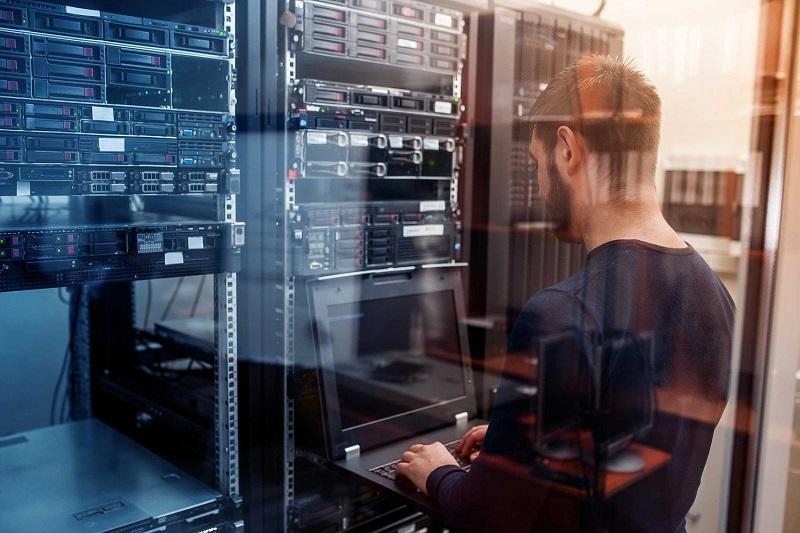Guide To Buying The Best SOHO Servers For Small And Medium Businesses
If You Have A Small Business Or An Entrepreneur Who Is Planning To Start A Startup, You Don’t Need To Think About Buying Expensive Servers Like The Proliant DL280 Gen10 That Come With A Lot Of Additional Costs.
Instead, you can focus on buying servers that meet your business needs. Also, if you have a business that has been operating in the business world for several years and now, due to the scope of the work, is planning to buy a server that meets the needs, you do not need to go for enterprise-class servers; It is better to think about buying servers that are made for small to medium-sized SMB businesses and offer good hardware capabilities.
In this article, you will learn about the best servers for small to medium businesses that allow you to have complete control over the data of your growing business.
Small businesses don’t need to buy expensive servers.
While some small and medium-sized businesses tend to use cloud-based servers, many reasons convince you to use in-house servers. Undoubtedly, in the beginning, buying a server for your company will be more expensive than renting a dedicated server or renting an entire cloud server. Still, the situation will be reversed in the long run, and you will profit significantly. In other words, buying an SMB server is more cost-effective than cloud servers, even compared to dedicated hosting.
Buying a server gives you an essential advantage: complete control over data and software, so you do not need to depend on third-party companies to host data. Of course, to achieve such a goal, you need to do other things like buying additional hard disks and regular backups for disaster recovery, but overall, buying a server is economically justified for business.
Small business servers are easy to set up and maintain, and vendors offer good technical support if required. It provides them without spending a lot of money. Unfortunately, buying the correct server to meet your business needs is not easy; that’s why, in this article, we decided to introduce you to the best servers for small businesses with everything small and medium businesses need to get started.
Servers suitable for small businesses should be robust enough to respond to and handle the transactions of large numbers of users and workloads. In addition, they should offer good scalability capabilities to meet the needs as the business grows.
How to buy a suitable server for a small business?
Business servers are computers mainly installed in data centers, are always on, and provide clients with access to resources through gigabit Ethernet. Companies use servers to host various services and applications to meet business needs. Typically, companies use business servers in the following applications:
- Secure email hosting
- File sharing
- Implementation of internal cloud storage space
- Hosting a website or e-commerce store
- Hosting SaaS applications, such as customer relationship management, ERP software implementation, etc
- Building virtual servers
- Business data backup
- Storage and teamwork on documents
- Providing virtual desktops to employees
When you intend to buy a server for a small or medium business, you should pay attention to the following points:
Step 1: Check the server specifications based on the programs you intend to run on the server
There are two ways to calculate how much main memory, hard disk, and CPU you need when setting up a small business server. In the first method, you must list all the programs you plan to run on the server. Also, consider how many users each application will need now and shortly. For this purpose, you can refer to online articles to see how each application uses server resources. This step should be repeated for all large applications to be installed on the server. In the second method, you should provide companies and experts with a list of programs you intend to run on the server to provide the necessary advice.
Step 2: Determine the best location to deploy the server
When setting up a small business server, you have two main options. Place the server on the company’s premises or use a co-location solution to deploy the server in the data centers of third-party companies. In the second case, you must pay additional costs, such as location, electricity consumption, and cooling equipment, to the relevant company.
Step 3: Calculate the amount of budget you will allocate for the purchase of servers
The important thing when buying a server is the amount of budget you have. The requirements of each business are unique. Suppose you are just planning to start a business, and your business is engaged in general and non-specialized services. In that case, the number of company employees is five or fewer; it is better to purchase economic servers because it meets the needs. If your business is focused on selling products through online stores, you don’t need to buy expensive servers because your information is hosted and stored on third-party servers. Suppose you imagine your business will grow. In that case, it is better to consider buying a good chassis that allows you to quickly upgrade the hardware components according to your needs.
Step 4: Select the desired server type
Suppose you have decided to use servers provided by other companies. In that case, you have two main options, hybrid and dedicated servers; the advantages and disadvantages of each are shown in the table below.
Step 5: Buy the server from a reputable store or company
Once you have determined your business requirements, required processing power, budget, and server type, you are ready to order a new server for your business. If you want to buy a server that will be hosted in a data center, go for well-known companies that offer good features. If you have decided to buy a physical server, note that some models do not have a hard disk or RAM, and these hardware components must be purchased separately.
We suggest not purchasing the server online and going to the company’s location. Unfortunately, some online stores take advantage of the user’s distance from the company’s site or lack of familiarity with the world of technology and try to sell non-standard, repaired or non-guaranteed parts. Also, if you insist on buying online, buy from stores in your city to visit the place if you see physical breakdowns.
The suitable servers for small businesses in 2023
In the following, we will introduce the best servers so that by purchasing them, you will be sure that you will not have any problems regarding the processing power and the space required by the clients.
HPE PROLIANT ML350 GEN 10
Small but mighty
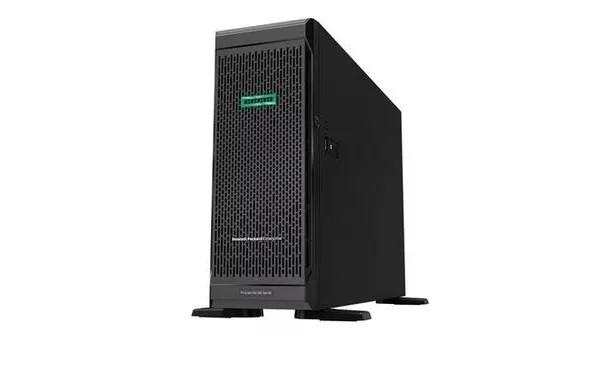
Technical Specifications
- CPU: Intel Xeon Scalable 4210
- Main memory: the ability to support up to 3 TB through 24 128 GB LRDIMM modules
- Storage: Capable of hosting 24 2.5-inch disks
- Integrated graphics: Intel HD Graphics P530
- Connections: USB port, iLO management port, VGA port, Display port, serial port, four network card ports
- Dimensions: 47 x 18 x 65 cm
Advantages
- Flexible and expandable
- Suitable for a wide range of tasks
- Powerful options for hosting storage
- Excellent remote management
Disadvantages
- It does not have a hard disk.
- High-level cooling equipment is needed to use some hardware components, such as the processor.
The HPE ProLiant ML350 is a powerful and versatile server capable of meeting the needs of small and medium-sized businesses, as it is equipped with two slots for installing processors and supports high-capacity main memory and significant external storage space. The ML350 Gen 10 supports Intel’s scalable Xeon processors and can handle everyday computing and workloads.
Although the above server does not have a hard disk, it supports multiple storage media. This issue has made this tower server play the role of a rackmount server for small businesses. This modular server allows you to use 3.5″ LFF and 2.5″ SFF drives. In a fully compact configuration, users can operate 24 2.5-inch SFF drives.
LENOVO THINKSERVER SR650 2U
Flexibility and can be used in different applications
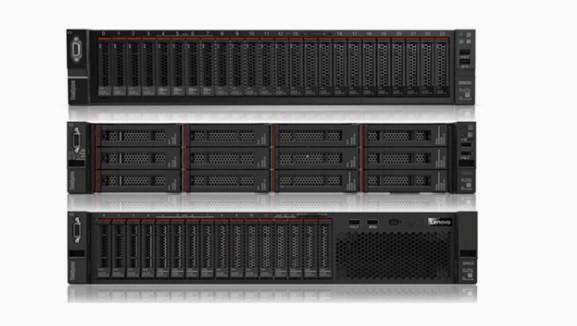
Technical Specifications
- Processor: Intel Xeon Scalable 4210
- Main memory: up to 3 TB via 24 128 GB RDIMM modules
- Storage: Ability to support up to 24 2.5-inch disks or 14 3.5-inch disks
- Graphics: Supports various NVIDIA Quadro, Tesla, and AMD Radeon graphics cards.
- Connectivity: USB 2.0 and USB 3.0 ports, Gigabit Ethernet port
- Dimensions: 8.7 x 44.5 x 76.4 cm
Advantages
- High flexibility and providing extensive settings
- Suitable for a wide range of applications
- Support for different drives and dual power supply, equipped with fans based on hot-swappable technology.
- • Benefit from efficient remote management controller
Disadvantages
- It does not have a hard disk.
- Drivers are required to install Ubuntu.
- Networking is done through LOM called LAN-On-Motherboard, which is not present on the server by default.
Lenovo ThinkSystem SR650 2U is a general-purpose server that can be used in various fields. The scalable Intel Xeon processor supports this flexible dual-unit server to handle multiple workloads such as databases, business analytics and big data, virtualization and cloud computing, virtual desktop infrastructure (VDI), and more. The SR650 server has a unique design called AnyBay, equipped with various interfaces, allowing you to use SAS drives, SATA drives, or U.2 NVMe PCIe drives. Therefore, there is no problem using processors, storage disks, and RAM modules for the above server. This issue has made it capable of supporting a wide range of different configurations.
Dell PowerEdge T30
A suitable alternative for an office workstation
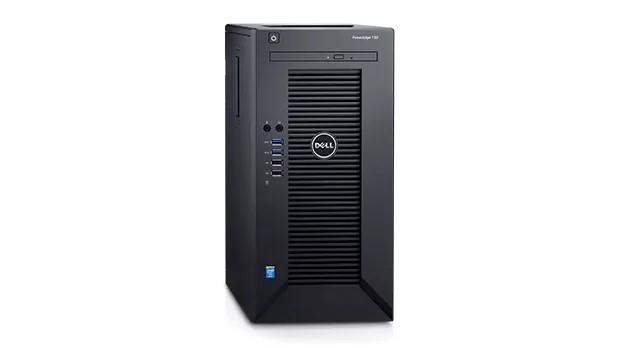
Technical Specifications
- CPU: Intel Xeon E3-1225 v5
- Graphics: Graphics: Intel HD Graphics P530
- Main memory: 64 GB
- Storage space: up to 6 SATA hard drives
- Connections: 10 USB ports, Gigabit Ethernet port, HDMI, DisplayPort, VGA, Serial, PS2
- Dimensions: 36 x 43.5 x 17.5 cm
Advantages
- Fast quad-core Xeon processor
- Enough bays to install six internal drives
Disadvantages
- A gigabit network port
- No support for hot-swapping hard disk
If you look at the server market, you will find many different products offering specific technical features, so sometimes you have to sort your list based on prices to find the best budget server. One of Soho’s powerful servers is the Dell PowerEdge T30, which can be used as a backbone in a small enterprise LAN. The T30 is designed for small to midsize businesses and offers good hardware features in a small chassis resembling tower servers. This server does not require a lot of space, but it can support six internal disks and is equipped with 10 USB ports, two display ports, and an HDMI port. Also, it is equipped with a quad-core Intel Xeon processor. All in all, the decent hardware features it offers make it a powerful workstation.
Supermicro Superblade
Efficient in responding to heavy workloads
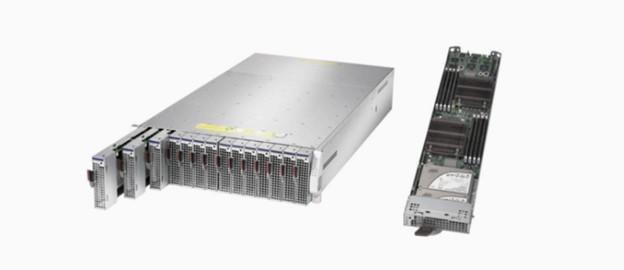
Technical Specifications
- Central processor: the ability to support up to 4 Xeon Scalable processors / achieve 112 processing cores
- Main memory: the ability to support up to 3 TB or 6 TB, depending on the model purchased
- Connectivity: Ability to serve two 10Gb Ethernet switches
- Dimensions: 35.6 x 44.7 x 81.3 cm
Advantages
- Four-socket Zeon blades
- Reasonable cost
- Very flexible and scalable
- Smaller dimensions compared to competitors
Disadvantages
- It lacks efficient management abilities in the enterprise-class.
Suppose you have a small budget for a server but are a medium-sized business that needs a server with good processing power. In that case, the SuperMicro SuperBlade server is a good choice. The SuperBlade is the least expensive of the enterprise-class blade servers from HP or Dell, but it gives you a wide range of options for what you pay. SuperBlade consists of multiple blade servers in a single chassis, providing you with more computing power than budget servers in a small footprint. Each blade can support up to four 28-core scalable Zeon processors with 3TB of 2666MHz DDR4 memory in 48 DIMM slots. In addition, the edges are easily accessible from the front, simplifying the maintenance process.
The SuperBlade chassis can support up to 8 NVMe hard drives or 4 SATA3/SAS3 hard drives and up to 8 2200W titanium power supplies (96% efficiency). Blade servers are available in full-height or half-height models. You can fit 20 half-height blade 2-socket servers in an eight-unit SuperBlade chassis. For this reason, you will have access to high processing power with low space occupation.
Dell PowerEdge T20
An economical server with good features
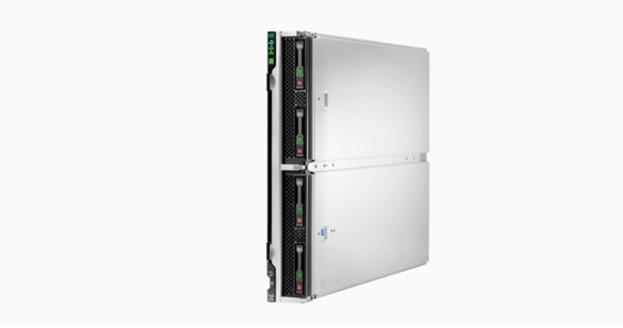
Technical Specifications
- CPU: Intel Pentium G3220
- Graphics card: Intel HD Graphics
- Main memory: 4 GB
- External memory: no hard disk.
- Connectivity: 12 USB 3.0 ports, two DisplayPort ports, VGA, serial, two PS2 ports, Gigabit Ethernet port
- Dimensions: 36 x 43.5 x 17.5 cm
Advantages
- Affordable
- A compact mini-tower server with easy access to internal components
Disadvantages
- The G3220 is more of a CPU for desktop computers than servers
- No drive or operating system
The best servers for small businesses don’t have to be big or expensive. For example, imagine the PowerEdge T20. With more than 20 years of experience in making servers, Del concluded that such a server meets the needs of small businesses. While the above server does not have a hard disk, its purchase price is acceptable for the technical features it provides. In other words, it brings a good return on investment in the short term.
This server is equipped with a Pentium processor based on the Haswell architecture (Haswell) that has a frequency of 3 GHz and supports up to 32 GB of DDR3 ECC RAM (note that this model comes with 4 GB of memory). Its expansion capabilities include four SATA ports that support 32 TB of storage if you use eight TB hard drives, 4 I/O slots, and 10 USB ports.
HPE SYNERGY 660 GEN10
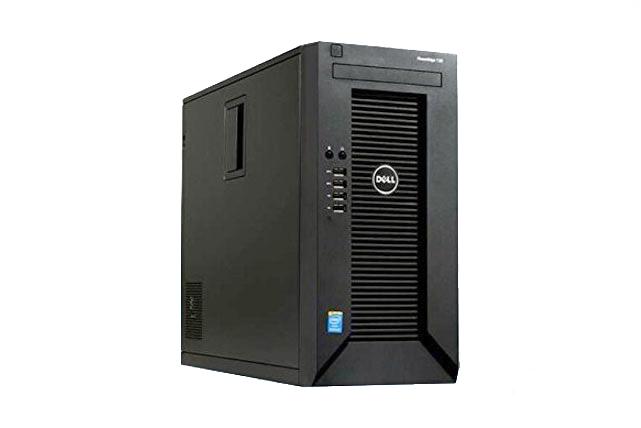
Technical Specifications
- CPU: Ability to support up to 4 Xeon Scalable CPUs.
- Main memory: the ability to support up to 6 TB.
- Connectivity: up to 2 10Gb Ethernet switches.
- Dimensions: 59.92 x 43.03 x 6.35 cm
Advantages
- Four-socket Zeon blades
- Good performance for the price
- Excellent management features
- Enterprise-class capabilities
Disadvantages
- A bit expensive for medium businesses.
HPE Synergy 660 Gen10 is a server designed for medium businesses that want to expand their business activities. If you can afford the Synergy 660 Gen10, you’ll soon have access to efficient processing power and decent storage. Nevertheless, we also mentioned this server at the end of the article because its technical features cannot be quickly passed in some cases on in some cases.
In addition, it is a server that excels in virtualization and containerization thanks to blades. HPE Synergy allows you to set up a physical or virtual infrastructure in no time. This server is designed to perform operations with high transaction loads and reduce operational complexity, allowing you to perform processing tasks quickly without needing the cloud.
The Synergy 660 Gen10 is a ten-unit tall, slightly wide compute module that plugs into the HPE Synergy Frame 12000. This server is equipped with features to detect crashes and suspected malware attacks. Supports four hot-pluggable SFF SAS drives up to 61.2TB (15.3x4TB) capacity to provide the highest scalability and flexibility for I/O operations.
